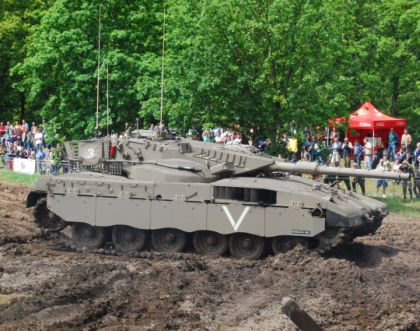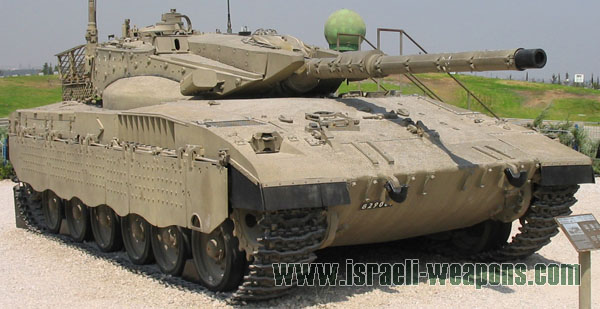M-95 looks pretty deadly, well armored and deadly (also has futuristic look, but the look isn't important at all).


Which army will have only 30 tanks? The Czech Army (T-72 M4 CZ). Which army bought 200 8x8 Pandurs II for price of 800 upgrades of T-72 to heavy APC, the Czech Army.
Which army have borrowed Gripens for very high price? The Czech Army. [sarkasm] Yeah here we can be really proud on our army (which military tech is from the half being repaired, part isn't our at all and the rest is small). [/sarkasm] I can imagine only chance against army of mujahedeens would be our artillery, some operational helicopters and quick retreat (Pandur is nothing for newer RPGs). The Czech Army has trained chemics and commandos, but lacks in quantity of military tech.
t-72 M4 CZ - practically only panzer is original, new motor, new autoloader, new electronics (laser warning, aim systems, etc.), new external armor (dynamic blocks of ERA), semi-stealth (special rubber coat) and smoke grenades (make stealth for IR detectors). This tank should be as good as Abrams, but I don't know. There's big weakness in each T-72, his Achilles Hell: the loader. It's better than Georgian modernization of T-72, maybe as good as Abrams from the 1st War in the Persian Gulf, but worse than Challenger II. The
best widely known tank can be Swedish modification of German tank Leopard II or modernized Challenger II.
Who knows, maybe T-95 would beat him, but this is known just for the Russian Army and spies. But still, there aren't any green, yellow either red bars...

When I mean beat, I mean resist more... Even 135mm (maybe it's even 155mm, normal tank has 120 mm cannon) with the best shell would be deadly for every tank.
And this is promo picture of t-72M4CZ:
http://www.vop025.cz/en/military-productio...odernized-tank/

------------------------------------------------------------------------------------------------------------------------
When I created this thread, I said you can post Turkic, Georgian or Israel stuff here, too. Israel is in the Middle East, but culturaly it's connected with Europe, so I post also some Israel stuff here

:
In these days there is new conflict

in a Gaza Strip. During existance of modern Israel there was still struggle between moslims and jews in Israel which had to accept islamic Palestina, but they refused and this turned into long conflict which is now actual in a Gaza Strip (there is currently peace in Lebanon or the West Jordan).
According to the Wikipedia
Merkava (Charriot in jewish) is the main battle tank of the Israel Defense Forces. Since the early 1980s, four main versions have been deployed. The "Merkava" name was derived from the IDF's development program name.
This platform is optimized for crew survival and rapid battle damage repair. With the use of spaced-armor techniques and quick-replacement modular designs, the design team was able to incorporate the composite armor, a derivative of rolled homogeneous armor (RHA) and Chobham armor. Additionally, the space between the inner and outer hulls is filled with diesel fuel — an economical storage method and effective means of defeating HEAT rounds.
Following the model of contemporary self-propelled howitzers, the turret assembly is located nearer the rear than in most main battle tanks. This gives the crew additional protection against a frontal attack by putting the engine between them and the front of the tank. This arrangement also creates an otherwise unused space in the rear of the tank that allows increased storage capacity, as well as a rear entrance to the main crew cabinet allowing easy access even under enemy fire. This allows the tank to be used as a platform for medical disembarkation, a forward command and control station, and an armored personnel carrier. The rear entrance's clamshell-style doors provide overhead protection when off- and on-loading cargo and personnel.
It was reportedly decided shortly before the beginning of the 2006 Lebanon War that the Merkava line would be discontinued within four years. However, on 7 November 2006, Haaretz reported that an Israeli General Staff assessment had ruled of the Merkava Mark IV that "if properly deployed, the tank can provide its crew with better protection than in the past," and deferred the decision on discontinuing the line.
----------------------------- MK1 ---- MK3 ---- MK4
Crewmen ------------------ 4 ------ 4 -------- 4
Weight --------------------- 60t ---- 65t ------ 65t
Length with cannon ------- 8,63 -- 9,04 ----- 9,04
Width ---------------------- 3,7 ---- 3,7 ------ 3,7
Heighth -------------------- 2,64 --- 2,66 ---- 2,66
Motor load (kW) ---------- 662 ---- 883 ----- 1100
Max. speed on the road -- 45 ----- 60 ------- 65
Landing run --------------- 400 ---- 500 ----- 500
Cannon -------------------- 105 ---- 120 ---- 120
MK 2 was slightly upgraded MK 1.
MK I

A gift from Israel (to the museum).

MK II

MK III

MK IV

Which type is this one?

 for other info read here
IMI Wildcat APC
for other info read here
IMI Wildcat APC

APC based on Tatra* 4x4 chassis, tested by USA and Israel.
Crew: 3+9
GVW: 18,000 Kg.
Curb weight: 12,600 Kg.
Length (m): 7.153
Width (m): 2.50
Height (m): 2.69
Wheelbase (m): 3.6
Ground clearance (m): 0. 387
Fuel (litres): 250
Trench width (m): 0.9
Side slop: 30%
Gradeability at 18,000 Kg.: 60%
Climbing ability, vertical step (m): 0.40
Cruising rang, on road (km): 700 km
Maximum speed (km/h): 104 km/hr
Fording (m): 1.5
Engine: Cummins ILSe+325, 325 HP, turbocharged and after cooled, direct injection diesel, EURO III, electronically controled
Transmission: Allison, Model MD 3066P, automatic, 6-speed with drop box
*Tatra is Czech truck company owned by Americans. This makes at least 3 countries involved.
IMI = Israel Military Industries
Edited by partyzanpaulzy, 29 December 2008 - 21:17.
 Master_Chief, on 22 Oct 2008, 0:57, said:
Master_Chief, on 22 Oct 2008, 0:57, said:































 Sgt. Rho, on 26 Dec 2008, 13:13, said:
Sgt. Rho, on 26 Dec 2008, 13:13, said: NergiZed, on 1 Jan 2009, 1:41, said:
NergiZed, on 1 Jan 2009, 1:41, said:
